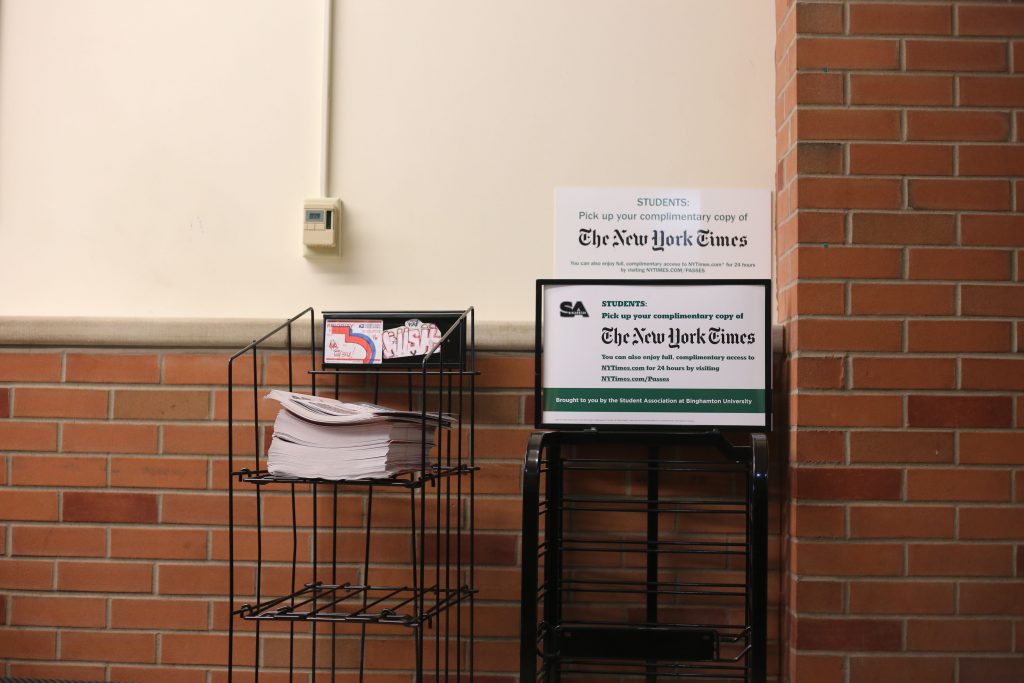
For the first time since the fall of 2011, hard copies of The New York Times are no longer available for free on campus.
After The New York Times proposed a significant rate increase per copy, Student Congress unanimously approved this year’s budget sans the Readership Program last spring. The final set of 300 newspapers was delivered to campus July 6.
According to Adam Ritter, education manager at The New York Times, the rate per copy would have risen from 70 cents to $1. Last year, the Student Association (SA) budgeted $24,963.50 for the program, up from $24,546 in 2015-16 and $23,873 in 2014-15.
Former SA President Nicholas Ferrara, who oversaw the drafting of the 2017-18 budget, said the continuation of the program wasn’t feasible considering the higher operating cost.
“While no one wanted to cut The New York Times, their rate increase made it unrealistic to continue the program,” he said.
The Readership Program had been run by the office of the SA vice president for academic affairs (VPAA). Raul Cepin, the VPAA and a senior majoring in Latin American and Caribbean Area studies, said the money used to fund the program will be rerouted to sponsor academic events hosted by SA-chartered groups.
“Let’s say the organization Thurgood Marshall Pre-Law [Society] wants to do a workshop on case competitions with a special speaker and they are short money; I would work with them to fund the event and market it to the larger student body,” Cepin said.
Cepin said another use of the funds could be to help the Student Association Programming Board (SAPB) fund a “big-name academic speaker.”
Mary Haupt, a lecturer in the English department who teaches journalism classes, said she’d sometimes incorporated The Times into her lesson plans.
“It’s a shame that the price went up and students won’t have access to it,” she said. “I’ll definitely miss always having it within reach and thumbing through it over lunch.”
The program was unique at BU in that it was managed by the Student Association. Some universities, including Wellesley College and the University of Oklahoma, subsidize print and digital subscriptions for students. The cost of a single paper on newsstands is $2.50, while subscription prices for college students range from $4 to $20 per month, depending on the level of access provided.
Mark Ochweri, who graduated last spring with a degree in environmental studies and who helped oversee the program, said its funding had always been a struggle, but its value made it worth it.
“It was never perfect, but we thought it brought access to the silos of knowledge, especially for individuals who never could reach those perspectives,” he said.


